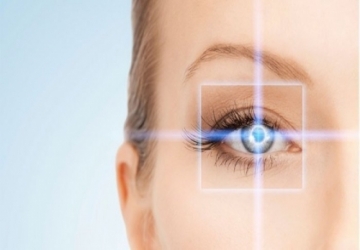
Laser vision correction operations
They are operations in which the curvature of the cornea is controlled by a laser in a way that treats myopia, farsightedness and astigmatism, which ultimately leads to the formation of a clear image on the retina, and the complete dispensing of medical glasses and contact lenses.
In all of them, the curvature of the cornea is controlled in a way that addresses myopia, farsightedness and astigmatism with great effectiveness. LASIK is not a surgical procedure. Rather, it is a laser correction of corneal curvature in a few seconds, and its effect lasts for life in most cases.
• Lens implantation (ICL):
It has witnessed a great development in recent years, especially after the emergence of the last generation of lenses implanted in the posterior chamber of the eye, which increased the degree of safety and effectiveness of the operation by nearly 100% and made the operation the ideal solution for patients who suffer from weak cornea or severe nearsightedness.
• Creating a map of the visual distortions of the eye and taking an eye print using a technology that identifies the problems that the optical system of the eye suffers from, which leads to a lack of efficiency of night vision even using glasses, then the computer attached to the LASIK device is fed with the necessary data in order to detail LASIK taking into account the treatment of these problems, This is called detailed LASIK or Alcastum LASIK.
• All that is required of the patient is not to move and respond to some of the instructions that the doctor gives him during the operation, then the patient moves to the waiting room until the doctor examines him again and the patient returns home.